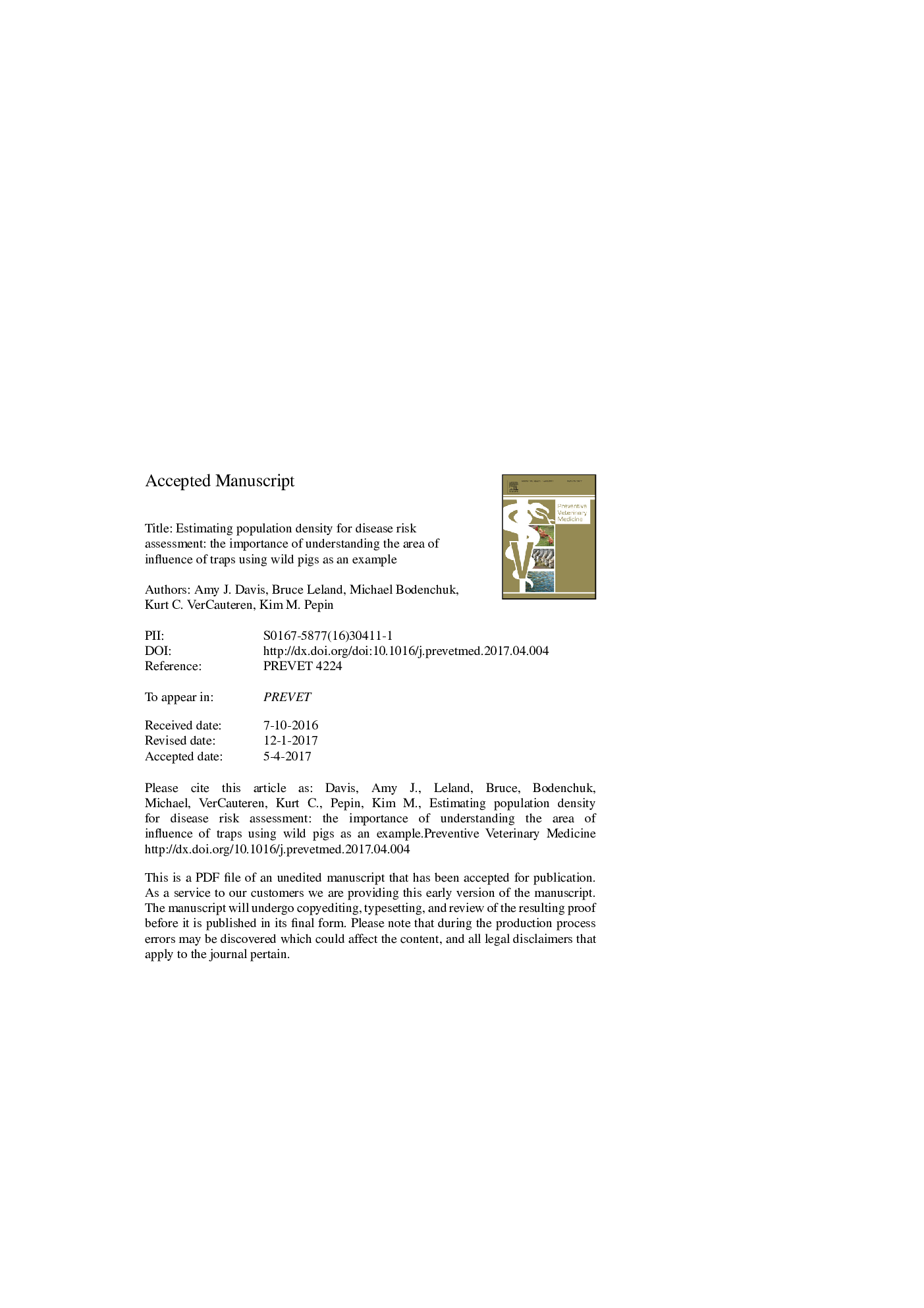| کد مقاله | کد نشریه | سال انتشار | مقاله انگلیسی | نسخه تمام متن |
|---|---|---|---|---|
| 5543775 | 1554149 | 2017 | 20 صفحه PDF | دانلود رایگان |
عنوان انگلیسی مقاله ISI
Estimating population density for disease risk assessment: The importance of understanding the area of influence of traps using wild pigs as an example
ترجمه فارسی عنوان
ارزیابی تراکم جمعیت برای ارزیابی ریسک بیماری: اهمیت فهم دامنه نفوذ تله ها با استفاده از خوک های وحشی به عنوان مثال
دانلود مقاله + سفارش ترجمه
دانلود مقاله ISI انگلیسی
رایگان برای ایرانیان
کلمات کلیدی
تراکم، مدیریت، سوز اسکورا، به دام انداختن، خوک های وحشی بیماری حیات وحش،
موضوعات مرتبط
علوم زیستی و بیوفناوری
علوم کشاورزی و بیولوژیک
علوم دامی و جانورشناسی
چکیده انگلیسی
Population density is a key driver of disease dynamics in wildlife populations. Accurate disease risk assessment and determination of management impacts on wildlife populations requires an ability to estimate population density alongside management actions. A common management technique for controlling wildlife populations to monitor and mitigate disease transmission risk is trapping (e.g., box traps, corral traps, drop nets). Although abundance can be estimated from trapping actions using a variety of analytical approaches, inference is limited by the spatial extent to which a trap attracts animals on the landscape. If the “area of influence” were known, abundance estimates could be converted to densities. In addition to being an important predictor of contact rate and thus disease spread, density is more informative because it is comparable across sites of different sizes. The goal of our study is to demonstrate the importance of determining the area sampled by traps (area of influence) so that density can be estimated from management-based trapping designs which do not employ a trapping grid. To provide one example of how area of influence could be calculated alongside management, we conducted a small pilot study on wild pigs (Sus scrofa) using two removal methods 1) trapping followed by 2) aerial gunning, at three sites in northeast Texas in 2015. We estimated abundance from trapping data with a removal model. We calculated empirical densities as aerial counts divided by the area searched by air (based on aerial flight tracks). We inferred the area of influence of traps by assuming consistent densities across the larger spatial scale and then solving for area impacted by the traps. Based on our pilot study we estimated the area of influence for corral traps in late summer in Texas to be â¼8.6Â km2. Future work showing the effects of behavioral and environmental factors on area of influence will help mangers obtain estimates of density from management data, and determine conditions where trap-attraction is strongest. The ability to estimate density alongside population control activities will improve risk assessment and response operations against disease outbreaks.
ناشر
Database: Elsevier - ScienceDirect (ساینس دایرکت)
Journal: Preventive Veterinary Medicine - Volume 141, 1 June 2017, Pages 33-37
Journal: Preventive Veterinary Medicine - Volume 141, 1 June 2017, Pages 33-37
نویسندگان
Amy J. Davis, Bruce Leland, Michael Bodenchuk, Kurt C. VerCauteren, Kim M. Pepin,
